Resources
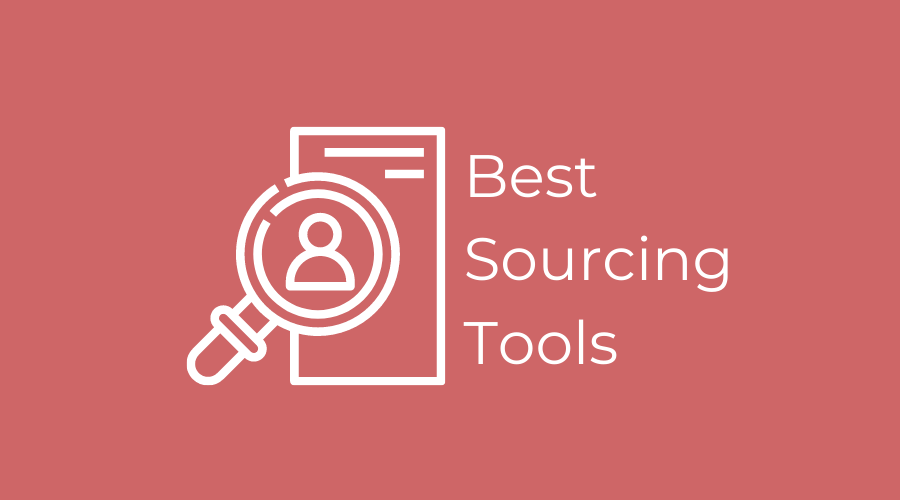
Recruiting Technology
3 min read
What are the Best Sourcing Tools?
Like a good carpenter, recruiters need a variety of tools to get the job done. And like good carpentry tools, sourcing tools make the job of proactively finding the right talent easier and more efficient. There are dozens of sourcing tools on the market. Some are free, though they limit the number of searches or the amount of information they provide. The more powerful and effective tools can cost from a few dollars a month to enterprise versions costing well into the hundreds. There are specialty tools for tracking down email addresses and phone numbers, sourcing top tech talent, identifying the best candidates among the resumes already in your ATS or CRM and others that will search the internet, social media or just specific sites. We’ve compiled a list of some of the more useful all-around sourcing tools, and, for good measure, a couple specialty tools. Most offer a free trial or have a freemium version, perfect for recruiters who actively source just a few positions. Hiretual Imagine having a highly skilled researcher at your elbow. That’s Hiretual, a 2018 product of the year. What makes Hiretual a standout is that it employs artificial intelligence to analyze a job description using its contextual understanding then sift through hundreds of thousands of candidate profiles to find the right match. Hiretual’s ready database contains more than 750 million profiles with information aggregated from dozens of networks and social platforms and the open web. It has specialty search solutions for tech and healthcare professionals, and searches for candidates based on their patents and academic and professional journal publications. Its Chrome extension provides additional insights and contact details right from candidate profiles on several professional networks. SeekOut Only four years old, this sourcing platform already has 600 million profiles in its database. Each is compiled from a broad variety of sources to create, as the company says, a 360 degree view of a candidate. Besides providing all the basic, resume essentials about experience and education, SeekOut’s profiles include enhanced details about skills, interests, talents, diversity and professional contributions gleaned from more than three dozen social and professional networks, publications and public profiles. Like other AI sourcing tools, SeekOut has a Chrome extension to enhance Google candidate search results with supplemental information. HiringSolved The company was one of the early pioneers in candidate profiling, aggregating data from multiple sites to build profiles far more detailed than any resume or LinkedIn profile. Last year, it announced it would focus on searching only internal databases, which may well be the most underutilized sourcing resource at any company. HiringSolved’s AI search engine now will quickly surface the silver and bronze medalists and others with the required skills that already exist in every company’s ATS or CRM. Matching can be by keyword, Boolean string or uploading a desirable resume or the job description itself. Humanpredictions Any recruiter ever tasked with sourcing tech professionals knows how hard it is just to find the right talent, let alone convince them to become a candidate. Humanpredictions simplifies the first part of that job. Focused exclusively on the tech industry, the company builds candidate profiles from a variety of sources and especially the open source code sites like GitHub and StackOverflow. That much it shares with the general sourcing platforms. Humanpredictions, however, goes a step further, logging changes to each professionals public profiles to predict who among them might be or might soon be starting to look for another job or who are at least most likely to respond to a cold call or email. Using Humanpredictions is pricey when compared to other sourcing tools, but then, hiring tech professionals is highly competitive so getting an edge can be well worth the cost. Swordfish This is one of the simpler, yet powerful tools for finding individual contact information. It’s a browser plug-in that will search for email addresses and phone numbers for profiles on LinkedIn, Facebook and a few others, including Bing and Google. Besides business email addresses and business phone numbers, Swordfish will also list cell numbers and personal email addresses. The free version provides for five lookups a month. Lusha More limited than Swordfish, Lusha works exclusively with LinkedIn profiles. As a Chrome extension, one click yields not only contact information, but also, for the premium version, some details about the company where the person currently works. Five lookups are free each month. Paid versions allow for many more, and export as a CSV or into a CRM. Your results with each tool will vary, try the free versions before you buy and then determine which sourcing tool is best for your team.
Continue reading
Recruiting
3 min read
What are Sourcing Techniques
The most critical part of any recruitment program is searching for the talent a company needs to fill a current opening or for jobs expected to become available in the future. There are multiple methods of finding candidates. Sourcing active job seekers by posting a job and selecting from among the applications that come in is the most common. Passive sourcing is the art of proactively searching and identifying talent that isn’t looking for a job and may never have even heard of the company. Sourcing these passive candidates is a more challenging and time-consuming process, especially if the job has unique requirements or is in high demand. But it also can yield candidates who are more productive and more likely to make a strong, positive impact. Sourcing is Proactive The first place to start a proactive search is in your own backyard. For every job opening a company will receive dozens or even hundreds of applications. But only one candidate gets hired. The runners-up were likely just as good. Many have since gained more experience and learned new skills. Now, instead of the silver or bronze medal, these once and future candidates could become your gold medalists. Social media, too, is a powerful way of identifying potential candidates and developing leads. Every day, hundreds of recruiters sift through the 740 million profiles on LinkedIn for the people who best fit their open jobs. Not only do these profiles have such basic information as work experience, skills and accomplishments, many include links to portfolios, projects and professional articles. Communicating with these potential candidates may be the hardest part of sourcing on LinkedIn. Professionals in high demand areas like software development may not even read your message. So instead, text them. Research puts the open rates for text messaging at 90% and the response rate is 2x as high as for phone or email. Go Beyond LinkedIn Though LinkedIn is the most popular way of sourcing passive candidates, don’t overlook other social media. Facebook is especially useful for searching for candidates among the thousands of active affinity groups on the site. While LinkedIn has its share of groups, many of those where the most in-demand professionals gather are closed. Facebook’s groups tend to be more generous. Besides joining a group, recruiters can use Facebook’s top of the page search tool to find members fitting basic search terms. With the help of web scrapers and free profile building tools, a skilled recruiter can source candidates they may not find anywhere else. Other social media can be even more fruitful, since there’s not as much competition from other recruiters. Using hashtags, Twitter and Instagram will turn up individuals as well as groups of relevant professionals. What makes them more valuable is using them to turn up leads to potential candidates. While both can be searched for specific skills or titles, searching by hashtags can be far more useful. People attending conferences, publishing articles and other work related events will tweet about them. Instagram, which is all about photos, can be especially useful. You’ll find people identified in the captions of photos from company and industry events who might not turn up elsewhere. Not sure what hashtag to use? Check the directory. Additional Sourcing Techniques Other valuable sources are association directories and professional lists and collections of academic and scientific papers, journals and books. Access to professional directories may be limited to members. Those that are open usually provide much more than a name and affiliation, so cross-check against Google Scholar and JSTOR. Professional publications will have contact information at least for the lead author, as well as the affiliation of every named contributor. Another good place to look for scientific talent is the Patent Office database. One clever and little known way of limiting searches of all kinds is to use Google and emojis. Yes, we are talking about those smiley faces and other icons people use to enhance email and text messages. By including a telephone, cell phone, email and related emojis in a Google search with your other criteria you’ll get only those results that also have contact information. Check here for a cheat sheet of emojis you can use. Our list here is just a sample of the many ways to source passive talent. We once heard of a tech search firm in Silicon Valley that distributed free paper placemats to restaurants and bars with a coding puzzle leading to their job site. You may not ever go to such lengths, but it shows that sourcing great talent can be done in all sorts of ways.
Continue reading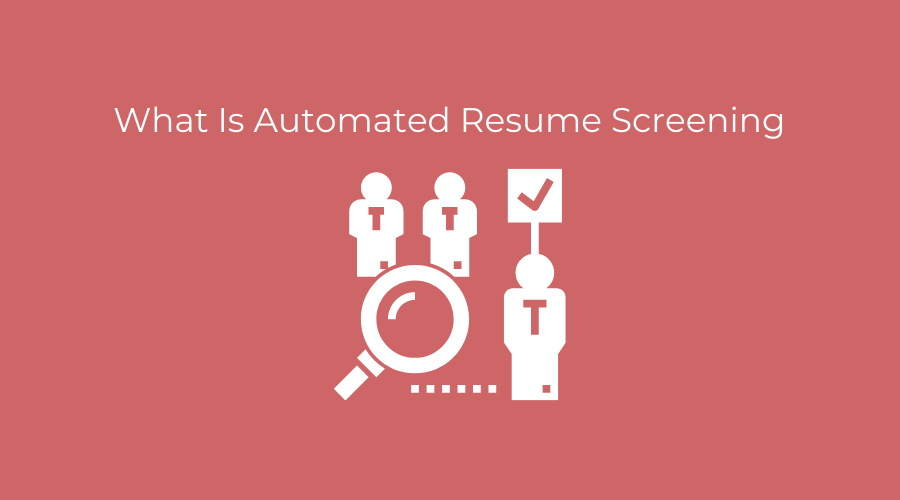
Recruiting Tactics
2 min read
What is Automated Resume Screening?
How much time does a recruiter spend reviewing a resume? Would you believe mere seconds? 7.4 seconds to be specific, at least according to a 2018 study by The Ladders. With every recruiter handling a dozen or more openings and every opening getting 50 or 100 or more resumes, there’s little choice but to quickly scan. At least, that’s the way it used to be. Now recruiters at companies all over the globe rely on screening tools to review, score and rank the incoming applications and resumes. These tools free them to look more closely at those candidates that come out on top. They also can eliminate the bias that might unconsciously influence a human recruiter. The earliest of these screening tools merely compared resumes against the requirements of the job description. This keyword matching ranked candidates by how many of the requirements were present in their resume. AI Resume Screening Today, AI resume screening is the state of the art. Going far beyond the keyword matching of an applicant tracking system, these tools understand context, and can impute good communication skills to a candidate whose resume mentions conference presentations and written work. Many will supplement a resume with information gathered from social media and public profiles. The most valuable – and controversial – feature of AI screeners is their ability to learn a company’s hiring preferences. They do this by analyzing existing company records for patterns among those who were hired. If a company tended to hire more people who had worked for a competitor, candidates with that background would score higher than those without that experience. When performance information is included, AI systems can perform even better, looking for those candidates who most closely match the company’s best workers. Because preferences change, AI screening tools do, too. Their machine learning algorithms constantly update the scoring system based on who now is getting interviewed and hired. The more data these programs have to work with, the better their scoring and ranking. However, if the data used to train these systems about hiring preferences is biased, then the screening criteria and scoring will be too. Amazon’s company-built AI recruiting system may be the most famous example of this. After bringing its program online in 2015, Amazon discovered the system was biased against women for technical jobs. Programmers had trained it using a decade’s worth of tech hiring information. Since most of the software developers were men, the system learned to prefer male candidates. It penalized resumes that included gender-suggestive backgrounds and phrases. Eliminating Bias After trying unsuccessfully to eliminate this bias and finding unqualified candidates were being recommended due to other problems with the training data, Amazon shut down the project. Builders of these screeners have learned from the Amazon experiment and now routinely audit their scoring and selection systems. The data used to train these screeners is also scrubbed of details like names, gender and racial references and even suggestive phrases. Some vendors of these programs have turned to skills and personality assessments to predict candidate success. They work by comparing how candidates perform on these assessments to the performance of the company’s best workers. Though this selection method is less likely to discriminate on the basis of sex or race, it can result in hiring workers who all think and act alike, limiting the potential for creativity and problem solving. There’s no question that AI candidate screening is a powerful tool to help recruiters find excellent candidates they might otherwise overlook in a 7.4 second resume review. When audited regularly and managed by talent acquisition professionals sensitive to the issues, AI resume screening can lead to hiring better workers more quickly and more efficiently.
Continue reading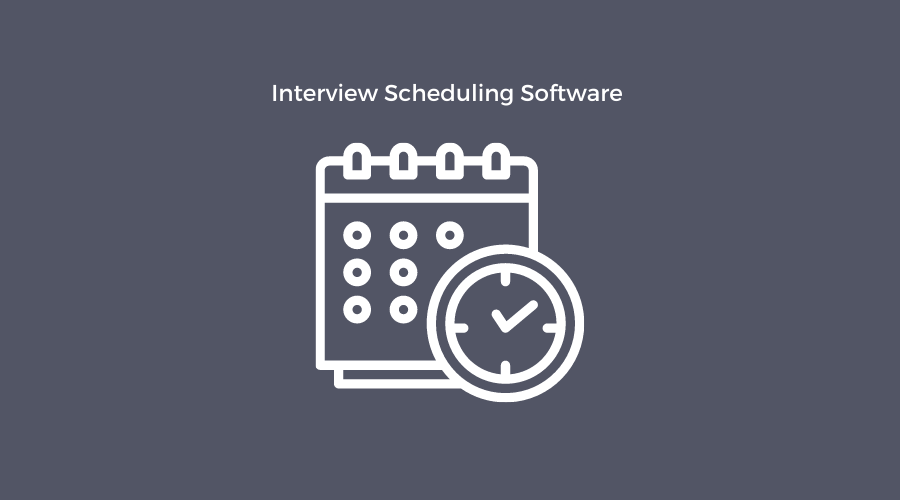
Recruiting Technology
2 min read
Intro to Interview Scheduling Software
One of the biggest pain points in recruiting today is the interview scheduling process. It often ranks as the biggest complaint among recruiters and candidates. All that back and forth, multiple calendars, different time zones can be a headache to actually complete. The actual process of scheduling candidates for interviews is important for two key reasons: Candidate Experience: By not having a simple and easy way to schedule an interview your candidates will notice. Today’s tech savvy generation expects a nearly one click experience to get on your calendar. Disappoint them at your own risk. Opportunity Cost: the time wasted in the scheduling process can be a detriment to recruiting. Speed is essential in today’s competitive job market. By dragging out scheduling you can lose a good candidate. A slow or incompetent scheduling process can only lead to disaster. Just head to Glassdor to see those rants! Making scheduling painless should be a priority for your entire talent team including the hire manager. Thats why having interview scheduling software in place is the answer. But before we dive into that, let’s talk about ways to improve that interview invitation. Ways to improve your interview scheduling invite Be mindful of the time commitment required to interview. Realize that the candidate is missing their own work to interview. Check with them to see how much time they can devote to your interview rounds. Reminder them via text and email about who they’ll be meeting with, the time and address (if in person). Add directions your office inside the invite if necessary. Keep a tight schedule. Try to eliminate down time between interviews if they are happening in a single timeframe. Lastly, get yourself some interview scheduling software to streamline, automates, and sync the entire interview scheduling process for all parties involved. Platforms such as Cronofy say that automating interview scheduling saves recruiters 284 hours per year and results in a 59% faster time to hire ratio. How to Choose Interview Scheduling Software A host of interview scheduling tools exist today in the market. But what should you look for before making a commitment? Obviously you’ll want a full demo and perhaps a few client referrals. Below are some things to consider if you’re in the market for this kind of software; Look for the following features; Automated Triggers: alert and invite candidates to self schedule themselves according to a calendar you set in place with certain interview times. Calendar Management: users should be able to update interview details at anytime, and see availability. Room Bookings: employers should be able to add physical meeting spaces to the app. Multiple Interview Types: the software should allow for group interviews as well as one-to-one. Support is an essential piece of any HR technology. Be sure your vendor offers some form of live support (chat/phone) to assists you with questions. Ask about their onboarding prices as well. If they just promote it as a DIY solution you could run into problems. Pricing generally involves how many employees you have. Many are subscription based (monthly) based on your company size. The beauty of this kind of software is that your recruiters can send customized emails to candidates to self-schedule themselves. Recruiters can be direct, rather than engaging in frustrating back-and-forth email chains. Interview scheduling software can and should be part of your modern recruiting technology stack.
Continue reading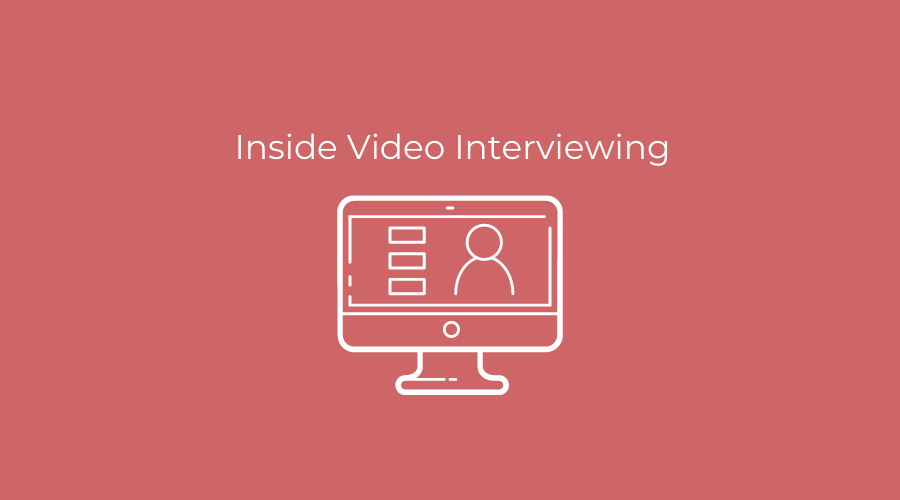
Recruiting
3 min read
How Video Interview Platforms Work
It’s hard to believe that only 10 years ago an innovative and economical alternative to flying a candidate in for an in-person interview was sending a webcam to them or have them go to an office with live video capabilities to conduct a virtual interview. Today, after a year of companies implementing effective ways to keep teams connected globally while working remotely through team collaboration tools and web conferencing software, using video interviewing has become the norm for most interviews and there’s no indication that we’ll go back to the way things were before Covid-19. Synchronous and Asynchronous Formats Currently there are two technologies within the platform ecosystem: synchronous, which is used for live interviews, and asynchronous, which is used for prerecorded interviewing. Early on, employers scheduled Skype interviews – which is a synchronous platform. Now employers are primarily using Zoom and Microsoft Teams to conduct virtual interviews. It’s convenient and economical for the candidate and the employer, plus candidates are typically very familiar with these applications. It is the new norm. Asynchronous is essentially a prerecorded interviewer. The popularity of asynchronous video interviews is increasing and the benefits are numerous. Setting up a pre-recorded interview is a simple process. First, the recruiter enters questions into the software and then invites job candidates to answer the questions. Candidates view an introductory video that describes the employer and informs them about the position. Then they are asked to respond to interview questions, using the software to record their responses using a webcam-equipped device or smartphone. The candidate can record their answers at a time that is convenient for them and the recruiter can also review the video when they are able. Besides the convenience and ease of the process there are many additional features available using an asynchronous, video interview platforms including: Intuitive and easy to get started video interview software Candidate assessment tools Video interview platforms with a full recruiting suite Video interview platforms combined with your CRM Candidate support and communication tools that keep the candidate informed of their status You can learn more about these features by checking some solutions by Select Software Reviews which recently reviewed the top 11 Video Interviewing Platforms. Cost/benefit Analysis The technology and innovation supporting the wide assortment of recruitment tools is constantly changing and improving. It’s challenging to know which tools make the most sense for your organization and what is the best long-term investment. A good way to start is doing a cost/benefit analysis. Know the full costs as well as identify the savings and gains based on the benefits when considering video interviewing including: Video interviews are 6x faster than phone interviews. You can conduct five video interviews in the same amount of time as one phone interview which is typically 30 minutes long. Making it more effective than phone screens. 84% of the candidates schedule a video interview within 24 hours of receiving a text invite; thereby reducing the cost and inefficiency of scheduling in person interviews. Video Interviews can be conducted at any time that is convenient for the candidate! Plus, candidates also can rerecord their video responses, leading to candidates having a better sense of being able to answer the question. The hiring team can better evaluate candidates because they can re-watch the video whenever they want, allowing them to go beyond a quick look of a resume in order to learn more about more applicants, helping to make better hiring decisions. Less time spent screening applicants, especially with the use of AI and various candidate assessment tools. Standardizing of the interview process with increased consistency in questioning and interview techniques. Less biased hiring. Decreased time-to-hire. Better candidate experience and excellent opportunity to positively reinforce your employer brand. Automated communication throughout the interview process. Two critical actions and some additional cost to keep in mind to ensure a successful process is to: Provide ample communication to your candidates on the video interviewing process and set expectations for their experience as well as how this content will be used. Make sure there is readily available technical support, should your candidate run into issues or need additional instructions. Just sending a link to your candidate for the video interview will not be a successful approach. By integrating video interviewing strategies into your talent acquisition processes, you can achieve cost savings and major long-term benefits resulting in better hiring decisions. ### Margaret Boros contributed to this article.
Continue reading
Recruiting Tactics
3 min read
Make Employee Rehiring Part of Your Talent Strategy
As vaccination rates rise and the COVID pandemic begins to subside, companies looking to restaff are discovering hiring more of a challenge than they suspected. But rehiring former employees may prove to be an untapped resource. Just this month, the CEO of restaurant franchiser FAT Brands described finding workers as a “total nightmare.” The National Federation of Independent Businesses said 42% of the small businesses it surveyed said they have jobs they can’t fill. With 8 million fewer people in the workforce and an unemployment rate declining each month, employers are turning to a strategy many of the largest companies adopted years ago – rehiring former workers. They learned long ago that staying in touch with former employees – company alumni (sometimes referred to as boomerangs)– has all sorts of benefits, besides simple goodwill. One of the most valuable is that it gives the company a ready pool of talent recruiters can tap for referrals and rehires. When companies began opening up after the shutdown rules loosened, they first recalled workers they laid off. Now, as hiring becomes ever more difficult, employers are reaching out to former employees who left for other jobs even before the pandemic shutdown. The Benefits of Rehiring Employees Old policies against rehiring former workers have given way to the reality that the skills and experience they bring far outweigh dated notions of loyalty. These rehires – often called “boomerangs” — need far less training and time to get up to speed compared to a first time hire. Rehires are also cheaper and faster to bring on board. Besides those obvious advantages, a rehire is a known quantity. Their former manager can attest to their skills and their fit both on the team and with the company culture. Performance reviews provide a record of the rehire candidate’s work and productivity. Rehires “understand the company, the product, the services, the systems and what’s expected of them,” said the chief people officer for Kronos, an HR tech provider. “You also know that the boomerang will mesh with the culture, which can’t be understated.” Rehires also offer some less obvious advantages. During their time away from the company they learned new skills and improved existing ones. Their return may also give colleagues second thoughts about leaving. Pete Sosnowski, VP of People at Zety, says rehires benefit from the experience working for a different company, whether in the same or different industry. “When they come back after a few years, they bring new experiences, contacts, customers, or at least a fresh point of view.” The most famous rehire in recent history is Steve Jobs. Fired in 1985 from Apple, the company he co-founded, he was brought back as CEO in 1997 to save the company and build it into a global leader. Rehiring Issues to Consider Of course not all rehires turn out as successfully, so before rehiring a company alum you need to apply the same due diligence you would to any candidate. Their HR record is an open book, yet it’s important to learn all you can about what they’ve been doing since leaving the company. Here are some of the reasons even a previously stellar performer might not make a good rehire: The company changed in ways the rehire may resist. The worker may have changed in ways no longer compatible with the company or team culture. There may be unresolved personality issues with former colleagues. The rehire might expect to be accorded more privileges or benefits based on their previous years of service. Hiring them into a more senior position may affect morale. This is especially critical if the job is one others on the team wanted. There’s also the risk that having left once, they may do it again. How to Successfully Rehire While the first place to start is with company records, no matter how good a rehire candidate’s track record, don’t shortcut the hiring process. All candidates need to be treated the same. The interview is the place to probe not just for what they’ve learned and the experience they’ve gained, but also for personality issues. Review their exit interview to understand why the employee left the company. If they expressed dissatisfaction with a manager or situation or policies, these are red flags to explore with the candidate. Rehires who left for more pay or to take a promotion may become resentful if they have to take a step back. Hiring managers should also get input from their team. Encourage frankness. You want to identify any issues before making an offer. When you do rehire, don’t skip onboarding. Especially since the COVID crisis new procedures and ways work gets done – remote work, for example – have likely replaced the policies of the past. Even the most enthusiastic and talented rehire will need to be brought up to date and given time to adjust. It’s encouraging to know that studies show three-quarters of managers who have made a rehire are glad they did. A ZenBusiness survey found almost 6-in-10 managers would rather rehire than bring in an equally qualified new worker. That’s a good enough reason for every company to stay in touch with former employees. These groups of alumni not only can serve as ambassadors promoting the company and its products and services, but are a rich source of referrals and rehires. It costs little to start a group, yet the dividends are great. ### John Zappe contributed to this article.
Continue reading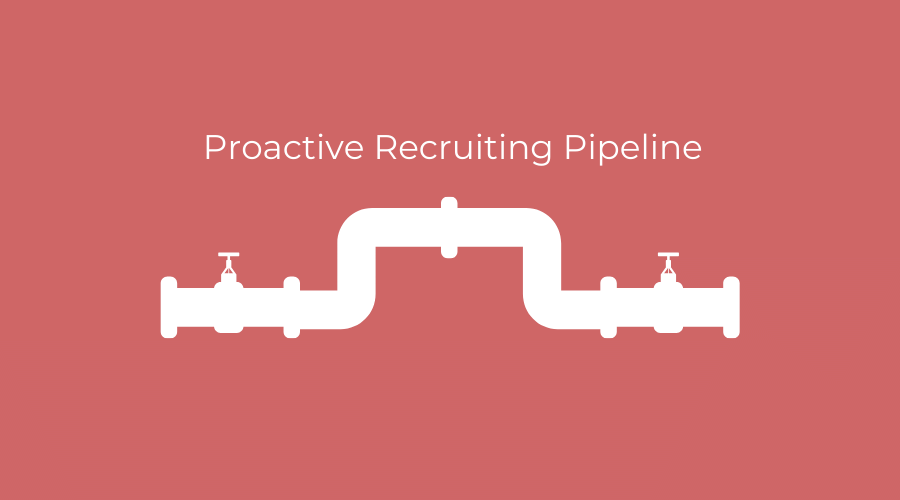
Recruiting
3 min read
Building a Proactive Talent Pipeline
Awhile back many organizations made a switch from using the term “recruitment” to “talent acquisition”. Talent Acquisition is not only a catchy phrase and continues to gain popularity, but it signifies a different approach because it is an ongoing strategy to find specialists, leaders, or future executives for your company. Building a talent pipeline requires time and effort. Recruitment tends to focus on filling vacancies, being transactional and concentrating on immediate actions and short-term goals. Think of the hours spent reviewing applications received through an open requisition and only using that limited pool of candidates to make a critical hiring decision, versus selecting someone who truly is a great fit. Having the title of recruiter does not mean you aren’t strategic and don’t have a long-term strategy to find talent. However, so many recruiters are burdened with high workloads, administrative tasks and time draining activities that they don’t have enough time in the day to do higher level work. The best recruiters focus on building strong, proactive talent pipelines. It takes time and an understanding of the long-term staffing needs of the organization, but once in place, your organization can reap the rewards of having a proactive recruiting pipeline. It’s what the best executive search firms do, so why not do it within your organization? What is a talent pipeline? Creating a talent pipeline is the process of identifying and engaging with candidates long before a position comes open – they’re not actually “candidates”. Rather, they’re people you are building a relationship with who have the essential skill set required in frequently hired and key positions within your organization. So, when a position is available in a few months or even years, you have a proactive talent pipeline of people who can fill the role quickly and, more importantly, will excel in the role and want to join your company. A recruiting pipeline: Significantly reduces the time to hire. Hard to fill roles typically taking over 3 months to fill can be filled as soon as the position officially becomes open. This can be extremely important in sensitive roles where a project can’t go forward without the people with the necessary skills to do the work. Reduces the aggravations of a standard hiring process such as scheduling interviews with different stakeholders and spending needless time on unqualified candidates, when no one has any extra time. Increases the likelihood of the retention and long-term success of the new hire. During the time you have been building the relationship with someone in the pipeline, that person is also learning about the organization and seeing how they’ll fit in for the long term. So once the position is open, there’s less convincing about why to join, and more of a celebration about becoming part of the team. Talent pipelines require relationship building: Relationships are ingrained in who we are as people. Relationships matter and help people in making decisions. So, if you have taken the time to build trusting relationships with people who have the skills your organization needs, when someone who has a choice to work for multiple companies, they will more than likely choose your organization versus going through a standard transactional recruitment process where the candidate applies, goes through the interview steps and maybe becomes an employee. Plus, the candidate can trust they are making a great decision given you’ve been talking to them professionally for years. Talent pipelines are built over many years. In order to meet people, you need to attend networking events, industry trade shows, ask for introductions, personalize your content to job boards and resume databases, be responsive and accessible. Talent acquisition is a relationship business not a transaction or a metric What’s keeping you from building a talent pipeline? Screening unqualified resumes (typically only 10% of resumes received meet job requisition qualifications). Sourcing candidates for an immediate fill due to lack of applicants to your job posting. Interview logistics. An overload of open requisitions. Not enough time since the task work interferes with the strategic work. How to solve the dilemma? It’s now easier and more affordable than ever, to automate the things that are repetitive, time drains and overwhelming. That’s the beauty of AI (artificial intelligence). AI can easily and more accurately handle the top-of-funnel sourcing, screening candidates and answering common questions. It’s not about taking jobs away so much as freeing up recruiters to do more valuable work, like relationship building! With more time, go to a seminar, network, reach out to people to set up a time to talk and learn more about someone you recently met. Maybe they love their current job and boss and there are no opportunities with your company for them right now. But things can change in a few months. Businesses, organizations, work situations, people are constantly changing and evolving. With a strong talent pipeline in place, you can be ready and in better control for the constant changes in the workplace and talent needs. Use AI to get more time. Then you use the time to be more strategic. That’s how you replace “transactional” with “adding value”.
Continue reading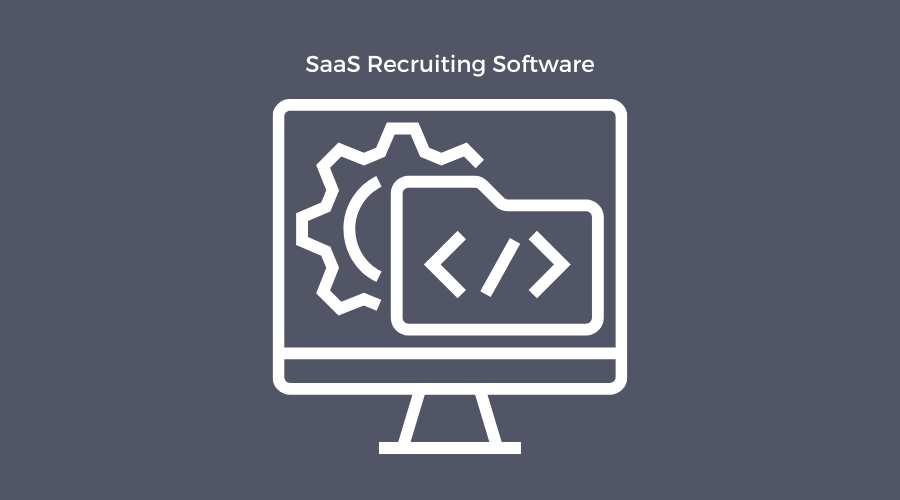
Recruiting
2 min read
Understanding SaaS Recruitment Software
SaaS recruitment software refers to on-demand ‘software as a service’, whereby the database and features are hosted in the cloud. SaaS for recruiting has been the prevalent model of recruitment software delivery for over five years. If you are still using a self-hosted or even an on-premise recruitment software delivery model, you can do so much more for less by using a SaaS recruiting software model. Why move to a SaaS recruitment software model Cost Effective: SaaS recruiting software does not need IT infrastructure support, internal maintenance, or additional staffing. The SaaS recruitment software provider takes care of the back-end requirements which are included into your subscription cost. Your subscription cost will more than likely cost less than the implementation and overhead costs of using your IT infrastructure, internal maintenance and additional staffing under an on-premise recruiting software model. A subscription also lets you buy what you need for the number of recruiters using your system versus spending for services that you never use. Easy Implementation: Most SaaS recruitment software allows you to import existing data easily, testing is minimal, there’s no software to implement and you can operate almost immediately once your subscription begins. Also, SaaS recruitment software will allow you to download data and integrate to other systems easily. Easy Access: Given this past year of working remote and using cloud technology on a daily basis, the recruitment industry has made a permanent change to primarily being a remote based function. Given the nature of SaaS you can access to your recruitment software anywhere you have an internet connection. When you are going through resumes and looking for best fit candidates, there’s no reason to be tied to a specific device or location. Tools focused on SaaS for recruiting functions set you free. Staying Current with Technology Changes: Technological improvements are happening continuously and technology upgrades are the provider’s responsibility with SaaS recruitment software, not yours. For example, SaaS recruiting systems are now mobile-friendly, and constantly evolving with new and expanded services within the Applicant Tracking, On-Boarding and Customer Relationship Management space. SaaS is the dominant trend in recruiting software More remote, freelance, and contract recruitment opportunities will become available in different industries as recruiting becomes more about networks, contacts, and relationship-building. The repetitive and mindless aspects of recruitment can now be done through AI (artificial intelligence). Screening, sourcing, and shortlisting can be done automatically through AI, freeing up your recruitment team to focus on the more value-add tasks. Candidate rediscovery becomes easier. 24/7 access to your SaaS recruitment database, lets you find past qualified candidates, contact them, and quickly move through the recruitment process to get someone hired and in place sooner than conducting a new search. Integrations with an ATS and other software will continue to get easier, promoting a positive candidate experience because the different products and services a recruiter needs will be “communicating” to each other more effectively. Technology is constantly evolving and at a quicker pace than ever before. Within HR, the Talent Acquisition function is changing at faster pace than many of the other HR functions. HR needs to stay current, adaptable and responsive to this constant evolution when it comes to productively sourcing the best talent. Using a SaaS recruiting software is essential.
Continue reading
Recruiting
3 min read
How To Measure Cost Per Hire
Knowing the cost per hire is one of the more essential recruiting metrics. It ranks up there with source of hire and time to hire. Like those two, the cost of talent attraction reflects on the efficiency of your recruiting efforts, especially when you compare it against benchmarks for your industry or comparable occupations. In order to provide a reliable yardstick for employers to measure and compare their cost of hire, the Society of Human Resource Management developed a formula that’s become an industry standard endorsed by the American National Standards Institute (ANSI). It lists all the possible types of expenses associated with hiring and goes into great detail about how to assemble it all. It can appear intimidating, especially for smaller business, but not all applies to every organization. The standard itself allows for some estimating and says, “While this Standard defines the types of expenses to include, a ‘down to the penny’ reconciliation of costs into the precise buckets… is not required.” Cost Per Hire Formula Calculating cost per hire sounds deceptively simple. Add up the cost of advertising the jobs, typically the cost of posting to a job board like ZipRecruiter or Indeed. Add in any other out-of-pocket costs like travel expenses for candidates from out of the area and there you have it. A surprising number of businesses, if they calculate cost of hire at all – one survey found 17% don’t – assume this is what it costs them to hire a worker. They’re wrong. Even small businesses spend more to fill an open position than they suspect. The out-of-pocket cost for a job board posting is only the most obvious expense. But what about the time it took to write the ad, place it, review the applications, interview the candidates and make an offer? If the business is large enough to have a recruiter, their total comp is part of the equation, plus the infrastructure – desk, chair, phone, computer, etc. – to support them. The SHRM formula for calculating cost per hire is itself straightforward: Internal costs + External costs divided by the total number of hires in a given period, most conveniently (but not necessarily) a year. In a survey a few years ago, SHRM found the average cost per hire was $4,425. Half the almost 500 respondents reported spending less than $1,633. Hiring an executive was much more costly, averaging $14,936. Another survey a year before put the average cost per hire at right around $4,000. What those surveys make clear is that hiring workers is expensive. And keep in mind these are average costs that take into account hiring everyone from an entry-level clerk to a CFO. Let’s take a look at some of the more common costs of recruiting and hiring starting with the ones likely to be easiest to track. These are what the SHRM / ANSI standard calls “external costs.” External Recruiting Costs Advertising expenses: Most commonly job board posting, but also including such sites as LinkedIn and Facebook, etc. Career fairs: The cost to participate for in-person and virtual fairs, plus the travel expenses of recruiters to attend. Agency fees: Costs paid to outside recruiting services. Screening and assessments: These include skills testing, medical screens, background checks and similar Candidate expenses: Interview travel, and travel and relocation costs paid to new hires, signing bonuses and, if necessary, immigration costs. Technology: The cost of the recruiting software. Internal Recruiting Costs Recruiter salaries: Total comp package costs. For companies without full-time recruiters, use the portion of their time attributed to recruiting. Office costs: Office expenses attributed to the recruiting function, include a pro rata share of rent and office equipment. Interviewing: Time spent by hiring manager and others interviewing and selecting candidates. Include any time spent by these to prepare. Once you know the costs, you can – and should — calculate the cost per hire by job type, department, management level and in other ways that make sense for your organization. Having this information allows you to compare costs to identify ways of improving hiring efficiency. If one hiring team routinely conducts multiple panel interviews, it might be possible to streamline the process without sacrificing hiring quality. Candidates will certainly thank you for that. There is one important ingredient missing from the cost of hire calculation and that is what can be called “lost opportunity.” An open position will have economic consequences: a project may be delayed, a sales opportunity missed, a customer who failed to get a deliver on time. No cost per hire formula takes this into account. It’s just too speculative nor is that the purpose of the measure. Still, having an open position has a cost. In large organizations with other workers who can fill-in, the cost may be barely visible. The smaller the business, the clearer the financial impact. The longer it takes to fill an open position, the more significant become those things that don’t get done or have to be delayed. So as you use your cost per hire strategically to measure recruiting efficiency and manage hiring expenses, keep that in mind. Cheaper hiring isn’t always better.
Continue readingAbout Emissary
Emissary is a candidate engagement platform built to empower recruiters with efficient, modern communication tools that work in harmony with other recruiting solutions.
Stay in the loop!
Subscribe to our bi-weekly newsletter and keep up to date with the latest Recruiting and HR tips and trends.
By clicking send you’ll receive occasional emails from us.
